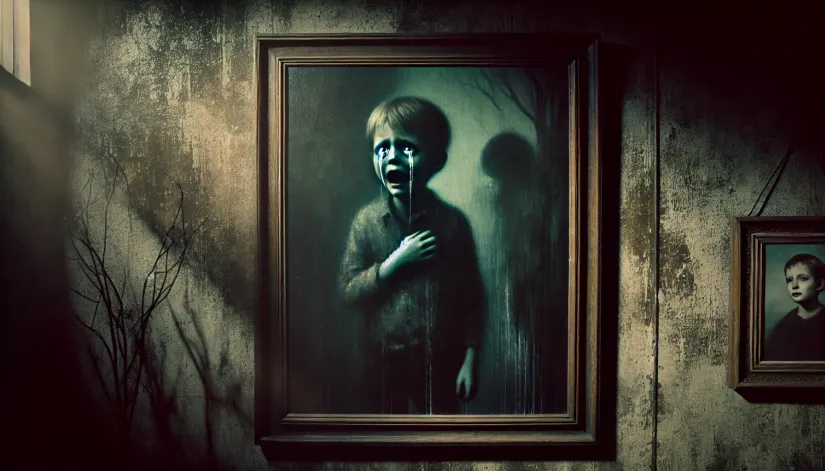“The Crying Boy” painting is notorious for its alleged curse that has haunted countless homes since the 1980s.
Linked to a series of mysterious fires, this unsettling artwork is rumored to bring misfortune wherever it hangs. So, could it be more to the story behind the eerie image of a tearful child?
In this article:
What is the Crying Boy Painting?
In the 1950s, the Italian artist Bruno Amadio (pen-name Giovanni Bragolin) painted the original “The Crying Boy.”
The piece—depicting a young child crying—quickly became a popular mass-produced print in the 1960s and 70s, particularly among women and the working class.
Allegedly, these unsettling paintings—of which there are around 28 versions—depict children who have passed away.
Now, here’s the really strange part. Since the 1980s, there have been a bunch of strange reports of house fires across England. The only thing all these fires had in common? “The Crying Boy” painting was often the only item left unscathed.
We just had to dig deeper into this mystery. So, we rolled up our sleeves and did some serious investigating. Here’s what we uncovered about this strange, possibly cursed—or even haunted—painting.
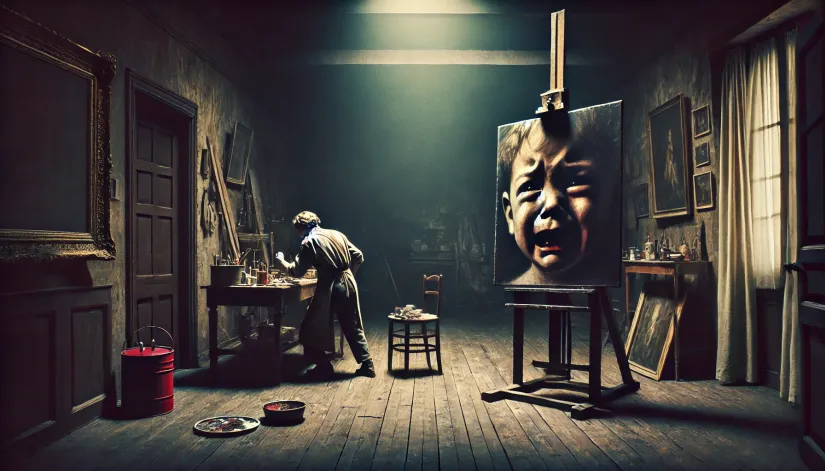
Who Painted The Crying Boy?
Unlike other allegedly cursed paintings (take “The Anguished Man,” for instance) whose author remains unknown, we do know quite a few things about who painted “The Crying Boy.” But his story is odd… to say the least.
Giovanni Bragolin’s Unusual Story
Giovanni Bragolin is the pseudonym of Bruno Amadio, an Italian artist born in Venice who became well-known for his haunting series of paintings, particularly “The Crying Boy.
Amadio did most of his work in post-war Italy, where he supposedly used fire-resistant materials to create his emotionally intense portraits.
However, while his work was relatively well-known, some pretty strange stories about his personal life started swirling around.
Some rumors suggest that Bragolin was cursed by a gypsy, which supposedly imbued his art with supernatural elements. Other tales claim that he made a pact with Satan to achieve fame, resulting in his paintings being linked to dark, paranormal forces.
However, these claims remain part of the legend and are not supported by tangible evidence.
Other Creators of Haunting Child Portraits
Though Giovanni Bragolin is most often associated with “The Crying Boy,” other artists were also drawn to similar eerie themes.
For example, the Scottish artist Anna Zinkeisen created a series called “Childhood,” which depicted sad children and gained popularity in the 1960s and 1970s.
Like Bragolin’s, her works were mass-produced and sold in department stores across the UK, further embedding the eerie motif of crying children into popular culture.
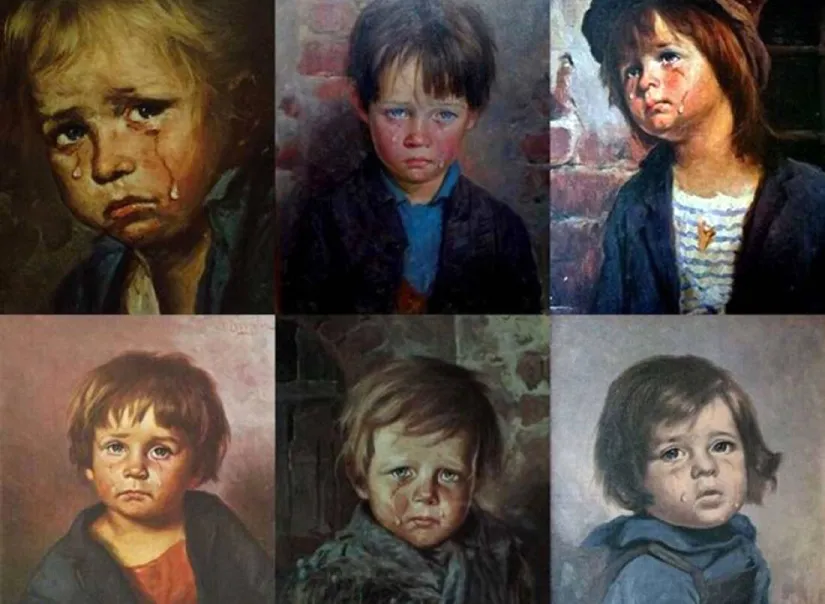
Who is the Boy in The Crying Boy Painting?
We don’t know for sure. No one does. Some rumors suggest the original painting portrays a young orphan named Don Bonillo from Madrid.
Don Bonillo (also known by the nicknames “Diablo” or the “Devil Child”) was known for his tragic ability to unintentionally start fires wherever he went (like the Russian psychic Nina Kulagina, who during the 1960s and 1970s claimed to be able to move objects—such as small items and even organs within animals—using only the power of her mind. Kulagina’s abilities were studied by Soviet scientists during the Cold War).
In the 1960s, the artist allegedly took him in, but after a series of mysterious fires—including one that destroyed the artist’s studio—Bonillo fled.
A few years later, in 1976, a car in Barcelona burst into flames after hitting a wall.
The driver, burned beyond recognition, was later identified through an intact driver’s license found in the glove compartment—belonging to a 19-year-old named Don Bonillo.
Is this an urban legend or a genuine curse? Interestingly, even the Yorkshire firefighters reportedly refuse to keep one of the “Crying Boy” prints hanging on the wall. Is it superstition? Or something more?
The Crying Boy Painting Curse
“The Crying Boy” painting curse grabbed the spotlight in the mid-1980s after a wave of mysterious house fires was reported across the UK.
These incidents shared a common and eerie detail: an untouched “The Crying Boy” print amidst the ashes of gutted homes.
The curse allegedly began with one fateful fire in Rotherham, and soon, stories of similar occurrences started to surface, fueling the legend and spreading fear.
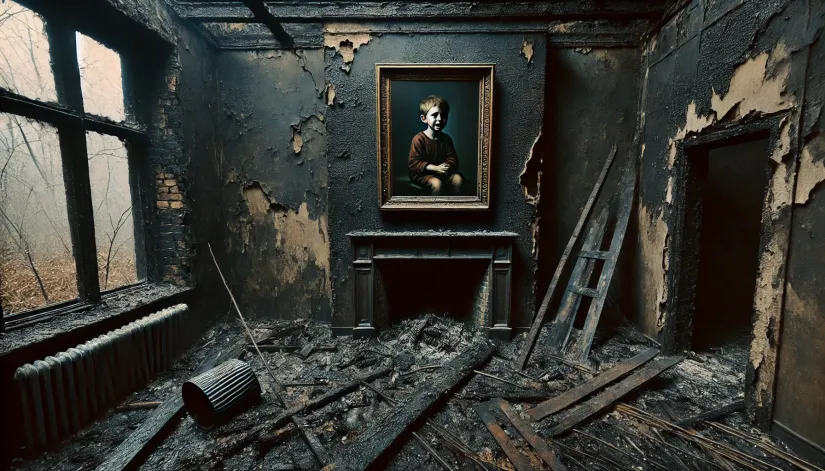
The 1985 Rotherham House Fire
As mentioned above, the curse’s notoriety began with Ron and Mary Hall from Swallownest, Yorkshire.
So, what happened?
According to the firefighter’s report, a chippan fire devastated their home. However, while everything else burned to ashes, “The Crying Boy” painting on the wall remained undamaged.
Peter Hall, a firefighter from South Yorkshire, reported this strange incident.
At first, the whole thing seemed like a bizarre detail. But soon after the incident appeared on the news, similar stories of undamaged paintings after house fires emerged—like those in Mitcham, Surrey, Paignton, Great Yarmouth, Herringthorpe, and Heswall, Merseyside—and the legend grew.
Dora Brand’s Home in Mitcham, Surrey
Dora Brand from Mitcham, Surrey, experienced a devastating fire six weeks after purchasing a “The Crying Boy” print. While her home was reduced to ashes, the painting remarkably remained undamaged.
Despite owning several other paintings, “The Crying Boy” was the only one to survive.
Sandra Craske’s Fires in Kilburn
Sandra Craske of Kilburn reported a series of fires that affected not only her but also her sister, mother, and a friend—all of whom had acquired copies of “The Crying Boy” painting.
Parillo Pizza Palace in Great Yarmouth
On October 21, 1985, the Parillo Pizza Palace in Great Yarmouth was completely gutted by a fire, yet the “Crying Boy” painting displayed prominently in the restaurant remained in pristine condition. This incident happened just days after similar reports.
The Godper Family in Herringthorpe, South Yorkshire
The Godper family of Herringthorpe suffered a devastating fire on October 24, 1985.
Their home (and almost everything in it) was destroyed. The only item that survived? Another “Crying Boy” painting hanging in their living room.
The painting was untouched by the flames, while the framed photos on either side were turned to ashes.
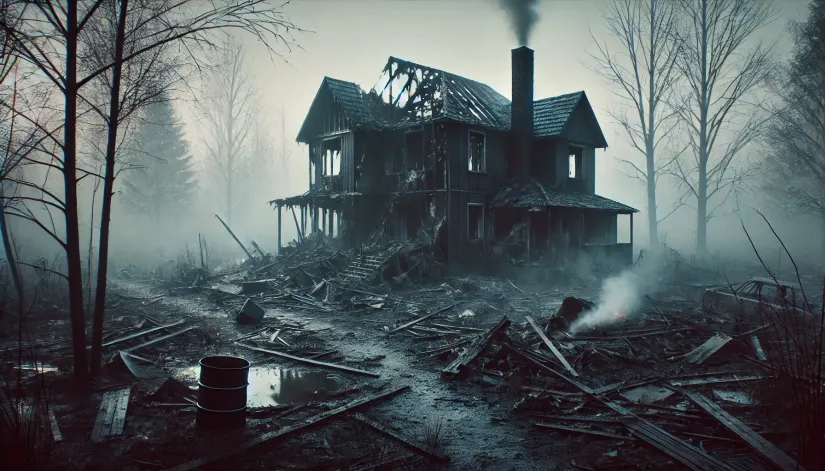
The Amos Family in Heswall, Merseyside
One day after the Herringthorpe incident, another fire. This time in Heswall, Merseyside.
On October 25, 1985, a gas explosion wrecked the Amos residence. However, two “The Crying Boy” paintings hanging in the living and dining rooms were found intact amidst the ruins.
Woodward in Forest Hill, London
Mrs. Woodward from Forest Hill, London, recorded herself destroying a “Crying Boy” painting. She was adamant that the curse was responsible for the deaths of her son, daughter, husband, and mother in two separate fire-related incidents.
Her tragic losses coincided with the painting being present in both houses.
Malcolm Vaughan in Church Down, Gloucestershire
In November 1985, Malcolm Vaughan of Church Down, Gloucestershire, helped a neighbor destroy their “The Crying Boy” painting.
However, when he returned home, he found his living room engulfed in flames for reasons firefighters could not explain.
William Armitage in Weston-Super-Mare
In December 1985, 67-year-old William Armitage died in a mysterious fire that swept through his house in Weston-Super-Mare, Avon. Another “The Crying Boy” painting was found lying intact beside his charred body.
One of the fast responders involved in the incident told The Sun tabloid that he had never believed in the curse until witnessing this unsettling scene.
Where is the Original The Crying Boy Painting Now?
Unfortunately, we couldn’t track down the original painting. While the painting itself was mass-produced and sold widely in department stores, the exact whereabouts of the original piece remain unknown.
Despite the legend and the fear surrounding these artworks, it is unclear if the original painting still exists. Or if it has been lost to time.
Nevertheless, some urban legends continue to fuel speculation. But that’s all they are. Speculation. There is no concrete evidence of the original’s current location.
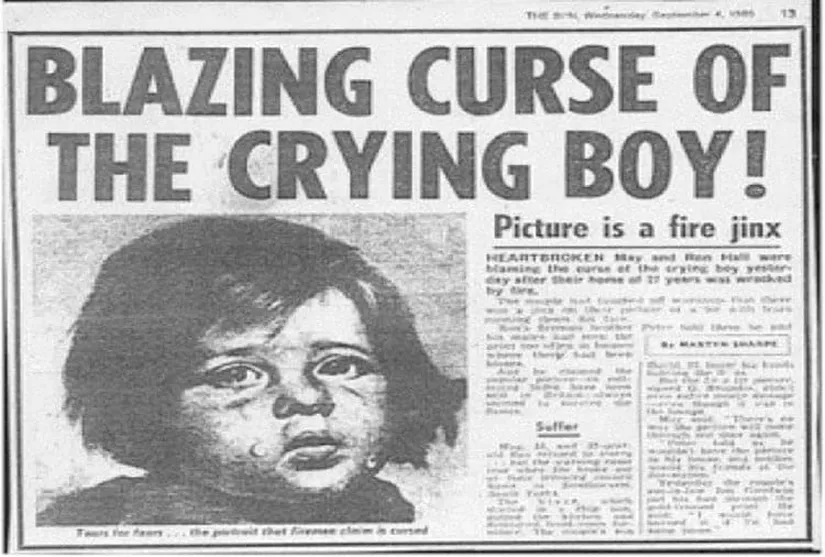
Media’s Role in Spreading the Curse
Stories about an allegedly cursed painting gained widespread notoriety primarily through the media’s influence, particularly in the 1980s.
The spark ignited the public’s fear from a series of articles published by The Sun (a famous British tabloid) beginning on September 4, 1985.
The newspaper reported on a house fire in Rotherham, where a “Crying Boy” painting was found intact amidst the ruins.
The article sold really well. It was later followed by a flood of similar reports from across the UK. All from people claiming that the painting was somehow linked to unexplained fires.
Of course, the tabloid capitalized on the public’s growing anxiety with follow-up reports that did nothing to calm people down. In fact, they did the opposite. They amplified the hysteria.
The newspaper even organized a mass bonfire on Halloween 1985, where thousands of “The Crying Boy” paintings sent in by worried readers were burned.
Beyond The Sun, other media outlets contributed to the legend’s spread.
For example, several TV shows and documentaries have since explored the curse, most notably BBC Radio 4’s “Punt PI,” hosted by comedian Steve Punt.
In a 2010 episode, Punt investigated the curse and even attempted to burn a “The Crying Boy” painting live on air. The problem? The painting turned out surprisingly resistant to flames—suggesting it may have been coated with fire-retardant material.
In a great irony, Punt’s attempt to debunk the curse paradoxically helped sustain its mystique.
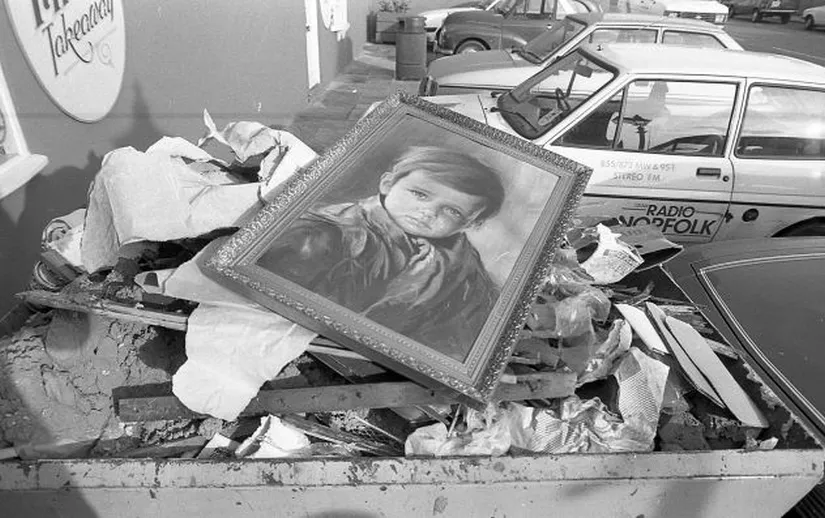
Is The Crying Boy Painting Really Cursed?
Now, here’s something to remember about all the presumably incidents linked to the painting: much of the evidence linking the artwork to a supposed curse is largely anecdotal.
The stories of fires where the painting remained untouched are compelling. Yet, they mostly come from tabloid reports and folklore rather than verifiable historical records.
You shouldn’t trust these reports too much. Moreover, the painting’s origins are primarily unclear and undocumented.
On top of all that, Giovanni Bragolin is also rumored to have used fire-resistant materials in his work.
This could potentially explain why some of the original paintings—and perhaps the earliest prints if they were made using similar materials—survived accidental fires.
It’s perfectly plausible that these rare instances of a painting surviving a devastating fire could have sparked the idea of a curse, which then grew into the legend we know today.

